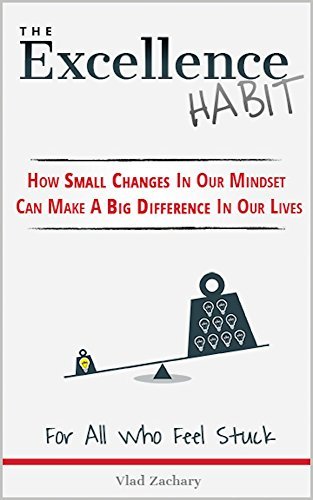
Atomic Habits: An Easy & Proven Way to Build Good Habits & Break Bad Ones
Book Description
Imagine transforming your life one tiny change at a time. In "Atomic Habits," James Clear reveals the secret mechanics behind the habits that shape our existence. With a captivating blend of science and practical wisdom, he uncovers how the smallest adjustments can lead to monumental shifts in behavior. Through gripping anecdotes and powerful strategies, he demonstrates that success isn't about radical change but about consistent progress. From overcoming destructive patterns to cultivating lasting routines, every page ignites the potential for a better you. What if the key to your future lies in the habits you build today?
Quick Book Summary
In "Atomic Habits," James Clear explores the remarkable power of small, incremental changes. He demonstrates that success is not the result of massive actions but the accumulation of tiny habits compounded over time. Drawing on scientific research and real-life stories, Clear explains how to break bad habits and cultivate positive ones by focusing on identity, environment, and systems rather than just outcomes. The book introduces a practical four-step framework—cue, craving, response, and reward—that deciphers how habits are formed and maintained. With actionable strategies and insightful explanations, "Atomic Habits" empowers readers to transform their routines, overcome obstacles, and build a foundation for sustained personal growth. Ultimately, Clear reveals that the key to lasting change is making good habits obvious, attractive, easy, and satisfying.
Summary of Key Ideas
Table of Contents
The Power of Tiny Changes
James Clear begins by emphasizing the underestimated impact of small, consistent changes. He uses the metaphor of atomic habits—tiny, almost invisible behaviors that, when repeated regularly, yield remarkable long-term results. Clear argues that people often fail to make progress because they seek overnight transformations rather than gradual improvement. The key, he posits, is to make 1% improvements, which compound over time and lead to significant breakthroughs. This focus on incremental progress challenges readers to shift from setting grand goals to nurturing everyday habits.
Habit Formation and the Four Laws of Behavior Change
Central to the book is Clear’s model for habit formation, which consists of four stages: cue, craving, response, and reward. These steps collectively form the habit loop, driving our everyday behavior. Clear proposes the Four Laws of Behavior Change as a guideline: make it obvious, make it attractive, make it easy, and make it satisfying. Each law addresses one stage of the habit loop and provides practical tactics for habit adoption or elimination. This framework helps readers understand not just how habits work, but how to engineer them consciously.
Identity-Based Habits
A distinguishing idea in "Atomic Habits" is the emphasis on identity-based habits. Clear suggests that true transformation occurs when individuals focus on who they wish to become, not just what they want to achieve. By aligning habits with one’s desired identity, actions become more meaningful and sustainable. For example, instead of committing to “run a marathon,” one might focus on becoming “a runner,” making daily practices a natural extension of self-concept. This shift from outcome- to identity-orientation facilitates lasting change.
Environment and Systems Design
The book also highlights the importance of environment and systems in shaping behavior. Clear argues that willpower is unreliable—successful habit change often involves redesigning one’s surroundings to make good habits easier and bad habits harder. Practical tips include organizing physical spaces, modifying social contexts, and setting up cues that prompt desirable behaviors. By prioritizing system-building over goal-setting, readers learn to create an environment that supports and sustains positive routines effortlessly.
Breaking Bad Habits
Finally, Clear addresses the challenge of breaking bad habits and maintaining motivation. He provides insights into identifying triggers, leveraging accountability, and using techniques like habit tracking and temptation bundling. Rather than relying solely on self-discipline, the book encourages the use of feedback loops and support systems to minimize friction and reinforce progress. Ultimately, "Atomic Habits" empowers readers with a toolkit for continuous improvement—one small action at a time—unlocking the potential for lasting behavioral change.
Download This Summary
Get a free PDF of this summary instantly — no email required.





